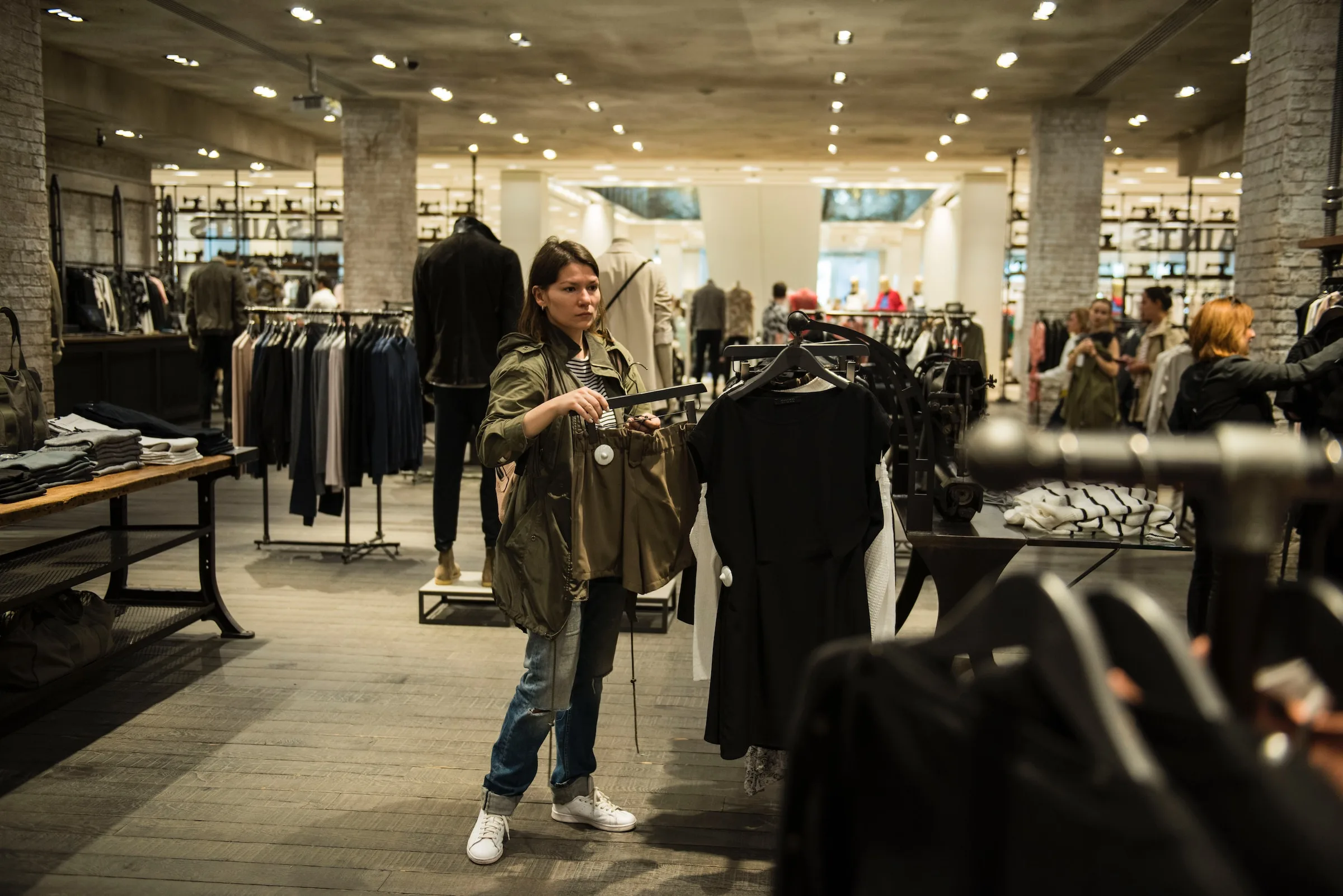Introduction
In the ever-evolving landscape of fashion retail, the winds of change are blowing with unprecedented force. The digital age has ushered in an E-commerce Revolution that has forever transformed the way fashion is bought and sold. As a small to medium fashion store owner, your journey to success in this new era hinges on your ability to adapt, innovate, and leverage cutting-edge technologies.
The E-commerce Revolution in Fashion Retail
Gone are the days when fashion boutiques were confined to brick-and-mortar stores. Today, your boutique’s reach extends far beyond your physical location. E-commerce has opened a gateway to a global audience of fashion enthusiasts, offering you the potential for exponential growth. The convenience of online shopping, coupled with the limitless possibilities of the internet, has created a fashion ecosystem where trends, styles, and tastes converge in the virtual realm. Your boutique is no longer limited by geographic boundaries; it can thrive on a global stage.
The Role of Cloud Computing
But how do you make the most of this boundless opportunity? This is where the role of Cloud Computing steps into the spotlight. Cloud Computing isn’t merely a technological buzzword; it’s the infrastructure that powers the digital revolution. It’s the backbone of your online boutique’s operations, enabling you to manage your business with unparalleled efficiency, flexibility, and security.
The Cloud empowers your boutique by providing a scalable and cost-effective platform to host your online store, process transactions, and store critical data. It offers the agility needed to adapt to changing market conditions and the resilience to ensure your boutique runs smoothly, even during peak seasons.
Setting the Stage for Success
As a fashion store owner in the digital age, success doesn’t merely depend on the quality of your products. It’s equally influenced by your ability to navigate the intricate world of E-commerce and harness the capabilities of Cloud Computing. In this article, we will set the stage for your success by delving into the practical aspects of using Cloud Computing to optimize your online boutique.
Understanding Cloud Computing
In the dynamic realm of E-commerce, understanding the fundamentals of Cloud Computing is essential to unleash the full potential of your fashion boutique. Let’s dive into the core concepts and practical insights that will empower you to make informed decisions regarding your online business.
What is Cloud Computing?
At its essence, Cloud Computing is the delivery of various computing services over the internet. It encompasses a wide range of resources and tools, from data storage and servers to software applications. Cloud services are provided by specialized providers, and as a boutique owner, you can leverage these services to eliminate the need for extensive in-house infrastructure. Instead of managing your servers and IT resources, you can rent space and computing power from a Cloud Computing provider. This shared approach allows you to scale your operations more efficiently and cost-effectively.
Exploring Cloud Services
Cloud services come in many forms, each serving a specific purpose. These services are categorized into three main types:
Infrastructure as a Service (IaaS):
This provides you with the fundamental building blocks of computing. You can rent virtualized hardware resources like servers, storage, and networking. It’s an excellent choice for businesses that want to maintain control over the operating system and applications.
Platform as a Service (PaaS):
PaaS goes a step further by offering not only the infrastructure but also the software environment required to develop, test, and deploy applications. For fashion boutiques, this can be invaluable for developing and hosting your E-commerce platform.
Software as a Service (SaaS):
SaaS is a ready-to-use software solution accessed via the Internet. This is where many E-commerce platforms, inventory management systems, and customer relationship management (CRM) tools reside. It’s a convenient option for quickly implementing necessary applications without the need for extensive development.
Benefits of Cloud Computing
The adoption of Cloud Computing brings numerous advantages to the table, which are particularly advantageous for online fashion store owners:
Cost-Efficiency:
You only pay for the resources you use, which reduces the capital expenses associated with setting up and maintaining traditional IT infrastructure.
Scalability:
Cloud resources are highly scalable, allowing you to expand or shrink your computing power as needed. This agility is vital for handling seasonal variations in the fashion industry.
Reliability and Redundancy:
Leading Cloud providers offer robust and redundant infrastructure, minimizing the risk of downtime and ensuring your online boutique is available 24/7.
Security:
Cloud providers invest heavily in security, offering advanced measures to protect your data and transactions. They also assist in compliance with industry-specific regulations, ensuring your fashion E-commerce business operates within legal boundaries.
Cloud Models in E-commerce
E-commerce businesses typically engage with the cloud in several ways:
Public Cloud:
This model involves renting resources from a third-party provider, like Amazon Web Services (AWS) or Microsoft Azure. It’s a cost-effective choice for small to medium fashion boutiques, as it allows you to scale effortlessly.
Private Cloud:
A private cloud is dedicated exclusively to your business. While it offers more control, it can be costlier to set up and maintain.
Hybrid Cloud:
This approach combines elements of both public and private clouds, offering flexibility to meet your unique needs.
Why Cloud Computing Matters for Fashion E-commerce
Cloud Computing is a game-changer in the fashion E-commerce industry for several reasons:
Global Reach:
With the cloud, your fashion boutique can reach a global audience, breaking the limitations of physical retail.
Efficiency:
It streamlines operations, from inventory management to supply chain optimization, allowing you to serve customers with speed and accuracy.
Data Security and Compliance:
Cloud providers offer robust security measures, helping you protect customer data and meet regulatory requirements.
The Cloud’s Impact on Fashion Retail
In the fast-paced world of fashion retail, staying competitive requires more than just offering trendy clothing; it demands a finely-tuned operational approach that embraces the power of Cloud Computing. Let’s explore how the Cloud can revolutionize your boutique, making your operations more efficient and your customer experience extraordinary.
Streamlining Operations
Efficiency is the lifeblood of any successful fashion boutique, and the Cloud excels in streamlining day-to-day operations. With Cloud Computing, you can:
Automate Tasks:
Automate routine processes like order processing, inventory tracking, and customer communications. This reduces the risk of errors and frees up your time for strategic planning.
Centralize Data:
Keep all your essential data, including inventory records and customer information, in one easily accessible location. This ensures that your staff can work collaboratively and with up-to-date information.
Inventory Management
Inventory management can be a make-or-break factor for fashion retailers. The Cloud offers:
Real-Time Inventory Tracking:
Monitor your stock levels in real-time, preventing overstock or understock situations and ensuring you’re prepared for seasonal changes in demand.
Automated Reordering:
Set up automated triggers for reordering products when they run low, preventing stockouts and lost sales opportunities.
Supply Chain Optimization
Effective supply chain management is a critical element of running a successful fashion boutique. The Cloud enables you to:
Connect with Suppliers:
Streamline communication with suppliers, making it easier to manage orders, track deliveries, and negotiate pricing.
Data-Driven Decision-Making:
Analyse data from the supply chain to identify cost-saving opportunities and improve logistics efficiency.
Enhancing Customer Experience
Your customers are the lifeblood of your boutique, and their experience is paramount. The Cloud can help you exceed their expectations in several ways:
Personalization and Recommendations
Customer Insights:
Collect and analyze data on customer preferences and behavior. Leverage this data to provide tailored recommendations and product suggestions, enhancing the shopping experience.
Targeted Marketing:
Craft personalized marketing campaigns based on customer preferences, ensuring that your promotions are relevant and engaging.
Responsive Customer Support
Multichannel Support:
Utilise Cloud-based customer support tools that allow you to engage with customers through various channels, including email, chat, and social media. Swift and responsive customer service sets you apart from the competition.
Securing Data and Transactions
Security is paramount in the world of online fashion retail. The Cloud offers advanced solutions to keep your boutique and your customers’ information safe:
Payment Security
Secure Payment Processing:
Implement secure payment gateways to protect customer transactions. The Cloud’s robust security measures help prevent fraud and data breaches.
PCI Compliance:
Ensure compliance with the Payment Card Industry Data Security Standard (PCI DSS) to build trust with your customers and protect sensitive payment data.
Data Privacy Compliance
GDPR and Beyond:
If you operate in regions like the European Union, it’s crucial to adhere to data privacy regulations, such as the General Data Protection Regulation (GDPR). Cloud providers often offer tools and guidance for compliance.
Key Strategies for Success
Achieving success in the Cloud as a fashion boutique owner requires a well-thought-out strategy. Here are essential strategies to ensure your transition to the Cloud is smooth and optimized for your online boutique.
Choosing the Right Cloud Provider
Selecting the right Cloud provider is the first critical step. When choosing a Cloud provider:
Reputation and Reliability:
Look for a provider with a strong reputation for uptime and reliability. Consider industry leaders like Amazon Web Services (AWS), Microsoft Azure, or Google Cloud Platform.
Service Offerings:
Assess the range of services and tools offered. Ensure they align with your boutique’s specific needs, from hosting to data analytics and security.
Comparing Providers
Before making a decision, it’s essential to compare Cloud providers. Some key factors to consider:
Pricing Structure:
Compare pricing models and find one that fits your budget and usage patterns.
Compliance:
Ensure that the provider meets compliance and regulatory requirements relevant to your business and industry.
Tailoring Solutions to Your Boutique
Each fashion boutique has unique requirements. Tailor your Cloud strategy to fit your boutique’s specific needs:
Scalability:
Choose a Cloud solution that can easily scale to accommodate the growth of your business.
Customization:
Leverage customizable features to create a unique shopping experience for your customers.
Migrating to the Cloud
Once you’ve selected a Cloud provider, it’s time to plan and execute your migration.
Planning the Migration
Effective planning is crucial:
Inventory Your Current Systems:
Understand your existing infrastructure and data, identifying what will be moved to the Cloud.
Create a Migration Plan:
Define a clear, step-by-step migration plan, including timelines, responsibilities, and contingencies for potential issues.
Overcoming Challenges
Migration to the Cloud can be challenging, but with the right approach, you can overcome obstacles:
Data Migration:
Address the complexities of migrating data, ensuring it’s secure and intact throughout the process.
Training and Skills:
Invest in training your team to effectively use Cloud tools and services.
Integrating E-commerce Platforms
A seamless shopping experience is at the heart of E-commerce. Here’s how to achieve it:
Seamless Shopping Experience
User-Friendly Design:
Ensure your online boutique is designed for ease of navigation, with a focus on user experience.
Mobile Optimization:
With the growing number of mobile shoppers, optimize your website for mobile devices.
Data Synchronisation
Real-Time Inventory Updates:
Implement real-time data synchronization to keep inventory levels accurate across all channels.
Order Tracking:
Enable customers to track their orders in real-time, improving transparency and trust.
Case Studies: Success Stories
One of the most compelling ways to understand the impact of Cloud Computing on the fashion E-commerce landscape is by delving into real-life examples. These case studies provide valuable insights into how Cloud Computing has transformed the fortunes of fashion boutiques, offering practical inspiration for boutique owners looking to achieve similar success.
Highlighting Real-Life Examples
To illustrate the practical benefits of Cloud Computing, let’s take a look at a selection of case studies from successful fashion boutiques:
Boutique A:
A small, family-owned fashion boutique that expanded into E-commerce, leveraging the Cloud to manage inventory across multiple online platforms. Their story demonstrates the power of real-time inventory synchronization in reducing overstock and missed sales opportunities.
Boutique B:
An emerging boutique specializing sustainably. By moving to the Cloud, they were able to scale their operations seamlessly during peak seasons while maintaining their commitment to sustainability. This case study highlights the flexibility Cloud Computing offers.
Boutique C:
A boutique that focuses on creating a personalized shopping experience for its customers. They utilized Cloud-based customer analytics to tailor recommendations and marketing efforts, resulting in increased customer satisfaction and higher sales.
How Cloud Computing Transformed Their Businesses
In each of these case studies, Cloud Computing played a pivotal role in transforming these boutiques’ E-commerce operations:
Scalability:
The Cloud allowed these businesses to scale up or down as needed, responding to fluctuations in demand and ensuring resources were optimally utilized.
Efficiency:
By automating processes such as inventory management and data synchronization, these boutiques reduced operational overhead and redirected their resources toward strategic growth.
Personalization:
Cloud-based data analytics empowered these boutiques to understand their customers better and offer personalized recommendations and experiences, enhancing customer loyalty and sales.
Practical Tips for Boutique Owners
To thrive in the Cloud, boutique owners must not only adopt this transformative technology but also make the most of its benefits. Here are practical tips to ensure you maximize the potential of Cloud Computing in your E-commerce journey.
Maximising Cloud Benefits
To reap the full rewards of Cloud Computing, consider the following strategies:
Embrace Automation:
Automate routine tasks such as inventory updates, order processing, and customer communication. Automation not only saves time but also reduces the risk of errors.
Data Analytics:
Harness the power of data analytics to gain valuable insights into customer behavior, sales trends, and marketing effectiveness. Use these insights to refine your strategy and decision-making.
Cost Efficiency
Cost efficiency is a hallmark of successful Cloud adoption. Implement these measures to optimize costs:
Rightsize Resources:
Regularly assess your resource usage and adjust your Cloud capacity to match your needs. Avoid overprovisioning or underutilizing resources.
Take Advantage of Cost Controls:
Most Cloud providers offer cost control tools that allow you to set budgets, monitor spending, and receive alerts when you approach your limits.
Scalability
The scalability of Cloud Computing is a game-changer for fashion boutiques. Ensure you scale effectively by:
Planning for Growth:
Develop a scalable architecture that can accommodate future growth. This is especially critical for seasonal variations in demand.
Utilise Elastic Resources:
Embrace the elasticity of Cloud resources, allowing you to quickly scale up during peak periods and scale down during slower times.
Monitoring and Optimization
Continual monitoring and optimization are key to success in the Cloud:
Performance Monitoring:
Regularly assess your Cloud environment’s performance to identify bottlenecks or underperforming components.
Resource Optimization:
Use Cloud management tools to identify areas where resource allocation can be optimized, such as CPU, memory, or storage.
Tracking Performance
Efficiently tracking performance is crucial to gauging the success of your Cloud strategy:
Key Performance Indicators (KPIs):
Define and monitor KPIs relevant to your boutique, such as website traffic, conversion rates, and customer retention.
Real-Time Analytics:
Use real-time analytics to track user behavior on your E-commerce platform, allowing you to make immediate adjustments as needed.
Future Trends in Fashion E-commerce and Cloud Computing
The dynamic landscape of E-commerce is ever-evolving, and staying ahead of the curve is essential for long-term success. As fashion boutique owners, it’s crucial to keep an eye on the future trends in both fashion E-commerce and Cloud Computing to remain competitive and innovative.
Artificial Intelligence and Machine Learning
Artificial Intelligence (AI) and Machine Learning (ML) are poised to revolutionize the fashion E-commerce industry. Here’s how you can prepare:
Personalization:
AI can analyze customer data to offer highly personalized product recommendations and marketing campaigns. As a boutique owner, consider integrating AI-driven recommendation engines into your E-commerce platform.
Inventory Management:
Machine Learning can help optimize inventory management by forecasting demand, reducing overstock, and minimizing stockouts. Leverage AI and ML tools to ensure your boutique’s inventory aligns with customer demand.
Internet of Things (IoT) Integration
The Internet of Things (IoT) extends the realm of E-commerce into the physical world. Prepare for this trend by:
Smart Fashion:
IoT devices like smart clothing and wearables are becoming increasingly popular. Explore the possibility of integrating IoT into your product offerings to tap into this emerging market.
Supply Chain Enhancement:
IoT sensors can provide real-time tracking of products and shipments, improving supply chain visibility and efficiency. Consider how IoT can optimize your boutique’s supply chain.
Data Analytics for Decision-Making
Data analytics is already a powerful tool, and its significance will only grow. Here’s how to harness it effectively:
Predictive Analytics:
Utilise predictive analytics to anticipate customer trends and preferences. By analyzing historical data, you can make informed decisions about inventory, marketing, and sales strategies.
A/B Testing:
Regularly conduct A/B testing to fine-tune your E-commerce website, marketing campaigns, and product listings. Data-driven decisions will be paramount in the competitive fashion e-commerce landscape.
Conclusion
As we draw the curtain on our exploration of fashioning success in the Cloud, let’s recap the key takeaways from our journey, offer words of encouragement to small and medium fashion store owners, and reaffirm the Cloud as your unwavering partner in E-commerce triumph.
Recap of Key Takeaways
Throughout this article, we’ve delved into the transformative power of Cloud Computing in fashion E-commerce. Here’s a concise summary of the essential insights:
- The E-commerce revolution has opened up new horizons for fashion boutiques, allowing them to reach a global audience and break free from geographic limitations.
- Cloud Computing serves as the linchpin of this transformation, providing scalable, cost-efficient, and secure solutions to streamline operations, enhance the customer experience, and ensure compliance.
- Key strategies for success include choosing the right Cloud provider, tailoring solutions to your boutique’s unique needs, executing a seamless migration, and integrating E-commerce platforms to offer a superior shopping experience.
- Real-life case studies have demonstrated the remarkable transformations that Cloud Computing can bring to fashion boutiques, from streamlined operations to enhanced customer experiences.
- Practical tips have been shared to help boutique owners maximize Cloud benefits, ensure cost efficiency, embrace scalability, monitor and optimize their Cloud resources, and track performance effectively.
- The future trends of Artificial Intelligence, Machine Learning, the Internet of Things, and data analytics are set to reshape fashion E-commerce, and boutique owners should prepare to embrace these technologies.
Encouragement for Small and Medium Fashion Store Owners
To the small and medium fashion store owners, remember that every fashion empire began with a single step. The Cloud is not just reserved for industry giants; it’s a powerful ally for boutiques of all sizes. Your passion for fashion, combined with the agility and efficiency that the Cloud offers, positions you to compete on a global scale. You have the creativity and uniqueness that larger corporations envy – use the Cloud to amplify your strengths and navigate the digital landscape with confidence.
The Cloud as Your Partner for Success in E-commerce
In closing, the Cloud is more than just technology; it’s your partner in the journey to E-commerce success. It provides you with the tools and capabilities to streamline your operations, cater to your customers with finesse, and stay ahead of the curve in a dynamic and competitive industry. By embracing Cloud Computing, you’re not just keeping up; you’re leading the way toward a prosperous and thriving future for your fashion boutique.



